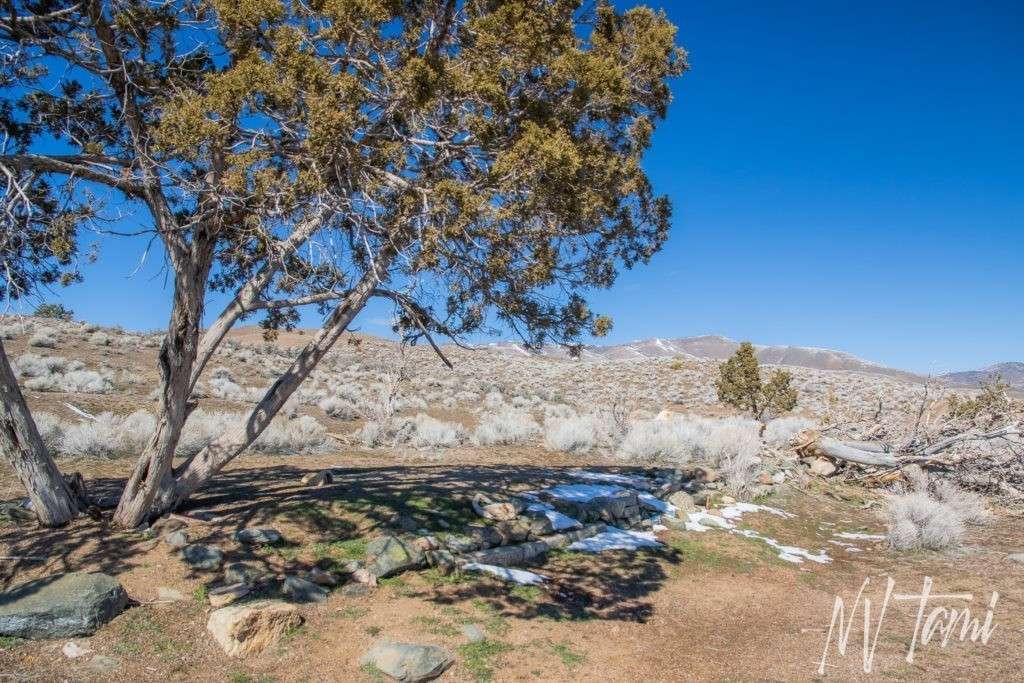
Ghost Towning
I had a few free hours on a chilly Friday morning, so I headed out for a mini ghost town trip with Great Basin Exploring and Nevada Expeditions. We explored around Dayton: Eldorado Canyon kilns, Rock Point Mill, Daney Mill, and Summit Station. We did a lot in 4 hours!

Toll Roads
During the gold and silver rush, roads were challenging and time-consuming to construct, especially in mountainous areas around the Comstock Lode. Nevada Territory did not have the resources available to build and maintain the infrastructure. As early as 1859, investors built private toll roads to access the Comstock Lode. Between 1861 and 1864, Nevada awarded toll road franchises to individuals or groups who bid to construct roads. In return for their investment and continued maintenance, travelers compensated the owners with tolls.
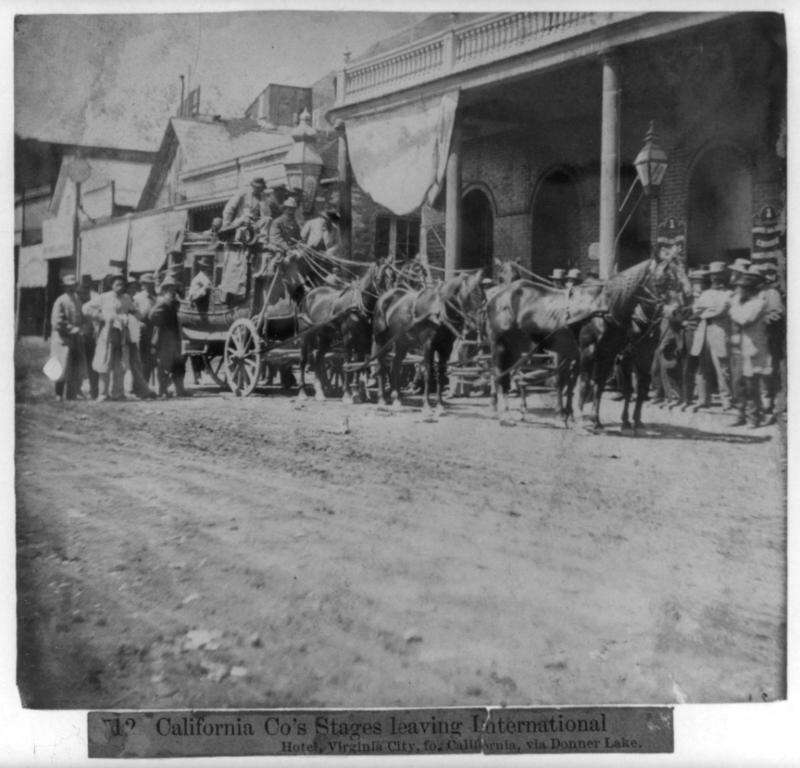
(Photo Credit: WNHPC)
Nevada established 117 toll roads, many connecting Virginia City and the Comstock Lode to supply centers and processing mills in Truckee Meadows, Dayton, and Carson City. Toll roads were so common Mark Twain editorialized them in Roughing It:
… it was estimated that every citizen owned about three franchises, and it was believed that unless Congress gave the Territory another degree of longitude there would not be room enough to accommodate the toll-roads. The ends of them were hanging over the boundary line everywhere like a fringe
Mark Twain: Roughing It

Nevada continued to regulate toll roads after their completion, including setting fee schedules. For example, one toll road in 1864 had a fee of $2 per wagon, $0.25 for extra horses, $1.50 for a rider on horseback, and $0.10 per sheep or hog. However, franchises expired after 20 years when the road reverted to the county, meaning the toll road era ended in 1884.
The roads from Carson to the Half-Way House are in excellent condition, and teams are making good use of them.
Gold Hill Daily News, September 25, 1867
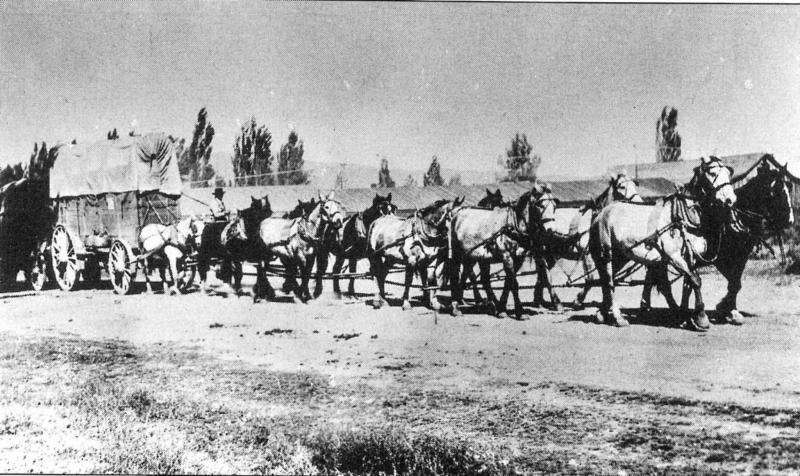
(Photo credit: WNHPC)
Summit Station/Half-way House
Station stops were located approximately every five miles. They were rest stops, restaurants, restrooms, and sometimes hotels. In 1860, Summit Station began its service. However, it was more commonly called Half-Way House due to its location halfway between Virginia City and Carson City. The station sat on the border of Ormsby County, now Carson City, and Lyon County.
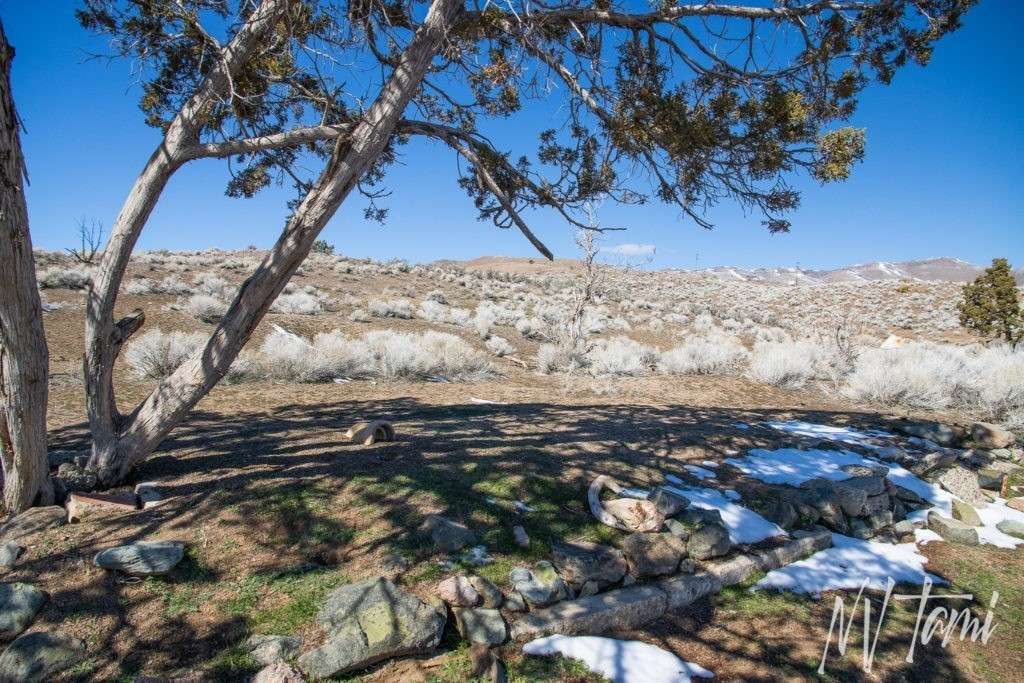
Summit Station was a polling location in 1861 but not large enough to warrant a post office or newspaper. The station was active until 1866 when it was relocated to Mound House.
A Public Skeedaddle
Half-Way House was a popular spot on the Carson to Virginia City Road with another group… highwaymen. In the six years of service, there were multiple incidents of robbery reported, including an incident with the governor.
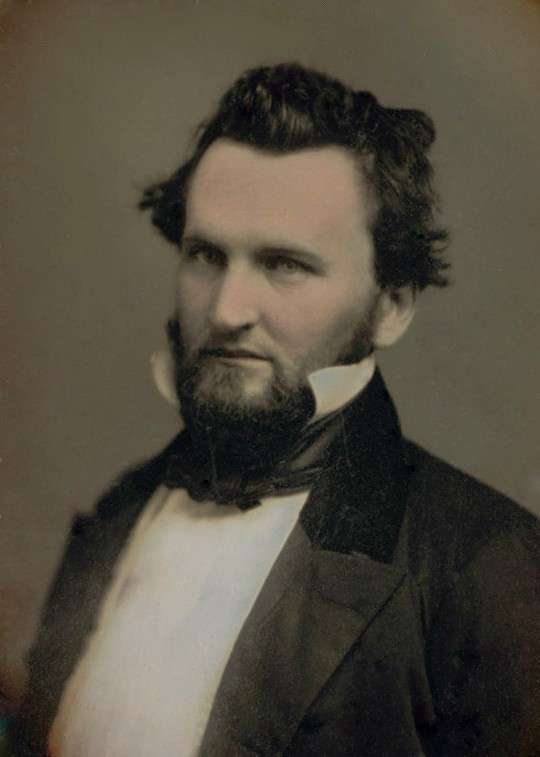
Governor J. Neely Johnson, c1870
(Photo credit: Wikipedia)
A cheeky reporter tells the tale of Governor Neely Johnson, who could not “stand fire,” hightailing it out after reports of robbery of an ox-driver. He writes that the Governor accompanied by members of the Constitutional Convention fled and …
“Cut stick” for Carson at a speed so accelerated that their coat-tails were invisible because of the dust in their wake!
Gold Hill Daily News
November 10, 186
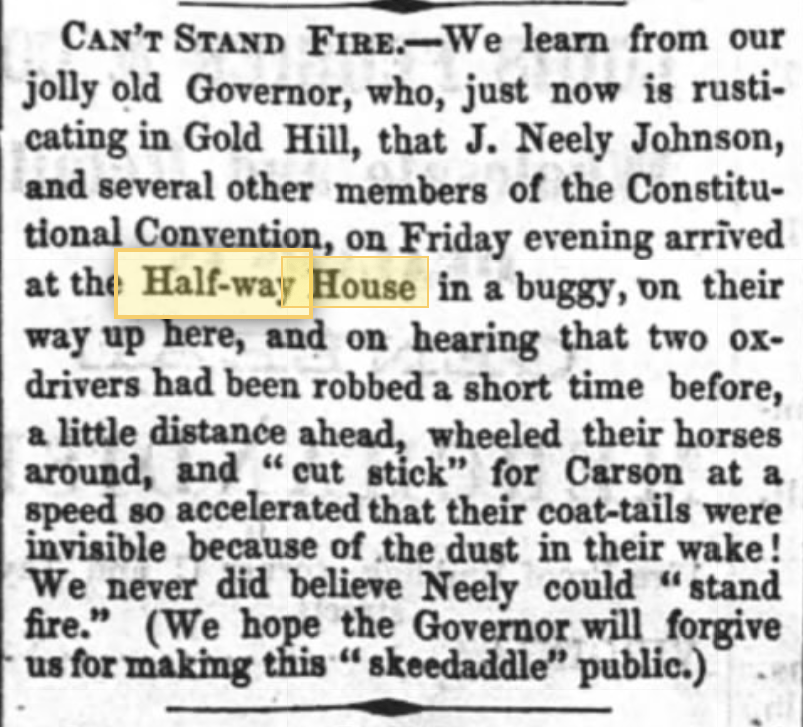
Even lawmen were not safe from hold-ups. Highwaymen held up Virginia Cities Mayor and Marshall with double-barreled shotguns. Quickly recognizing their victims, the robbers decided it was wise to allow them safe passage as “There was a better chance for bullets than twenties.” Additionally, the reporter speculates what would happen if the kidnappers shoved the mayor and marshall into a mine shaft. He questions if the ransom would be for $500 each.
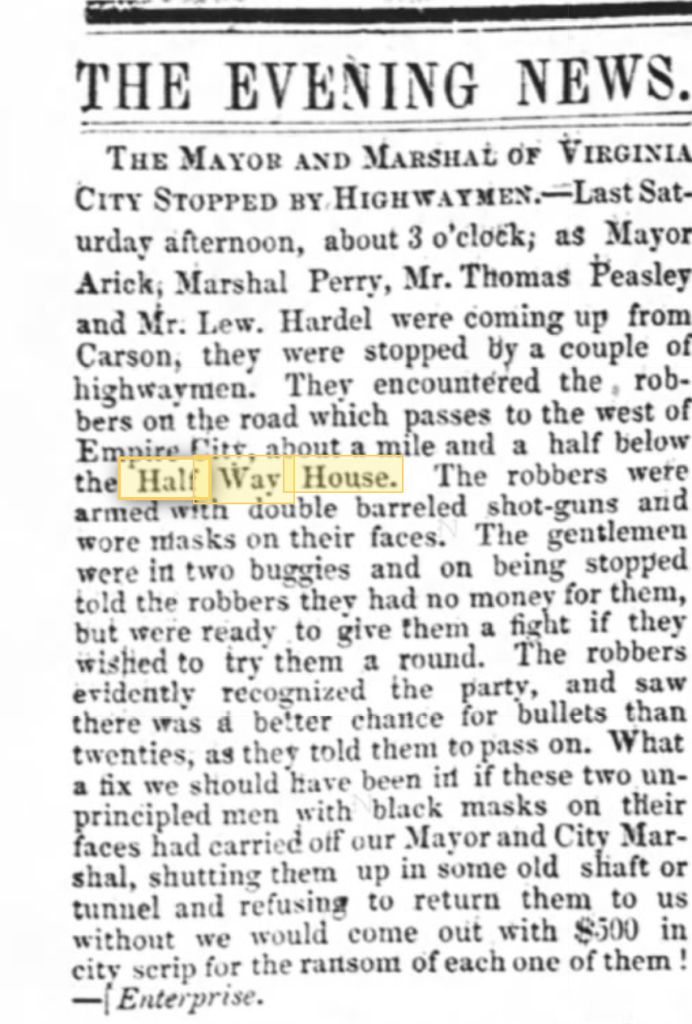
Ran Away to Summit Station
Accidents with wagons were unfortunately common, and the same is true with sleights in the snow. Billy Wilson’s sleigh was thrown, with passengers landing in a snowbank. Thankfully “Nobody much hurt.”
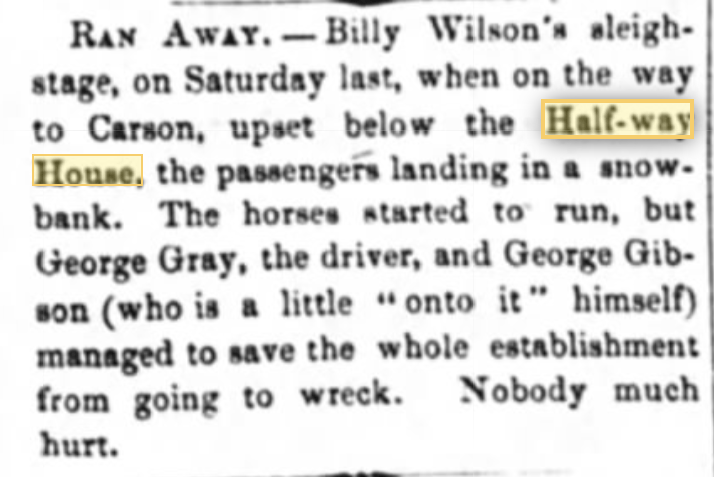
Horses would also run away from their owners, finding their way to Summit Station. Notices in the newspaper asked the owners to collect their steed and pay the charges.
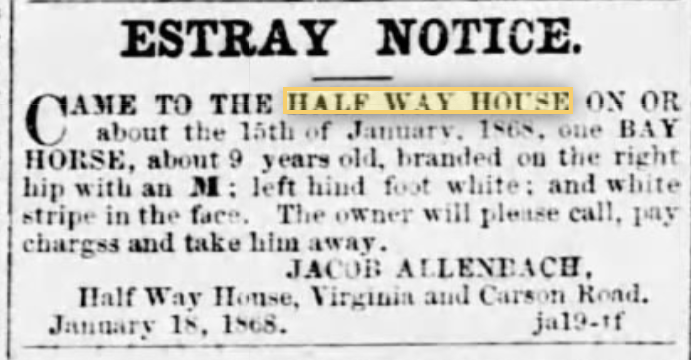
Sadly, some accidents around Summit Station were fatal. For example, poor John Jones was crushed under his wagon while picking up wood. A man named Ferguson found John, conscious but with broken ribs and back. Knowing he would not survive, John asked Ferguson to relay his final message to his wife.
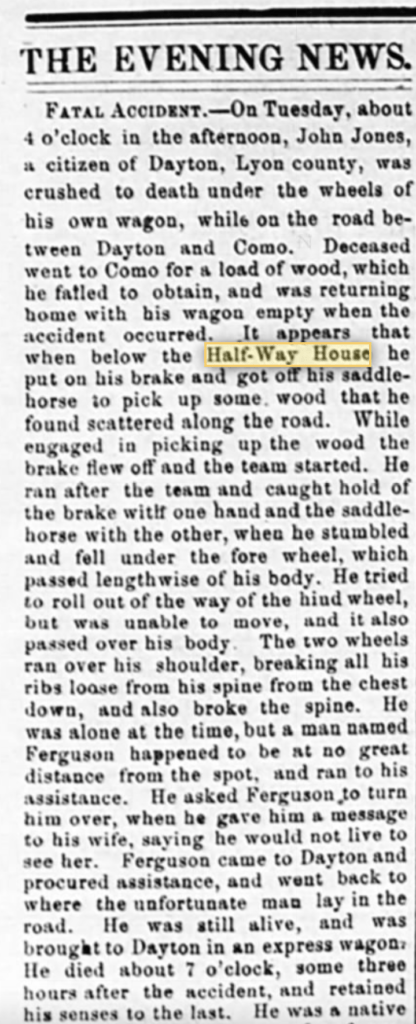
October 3, 1867
Summit Station Ruins
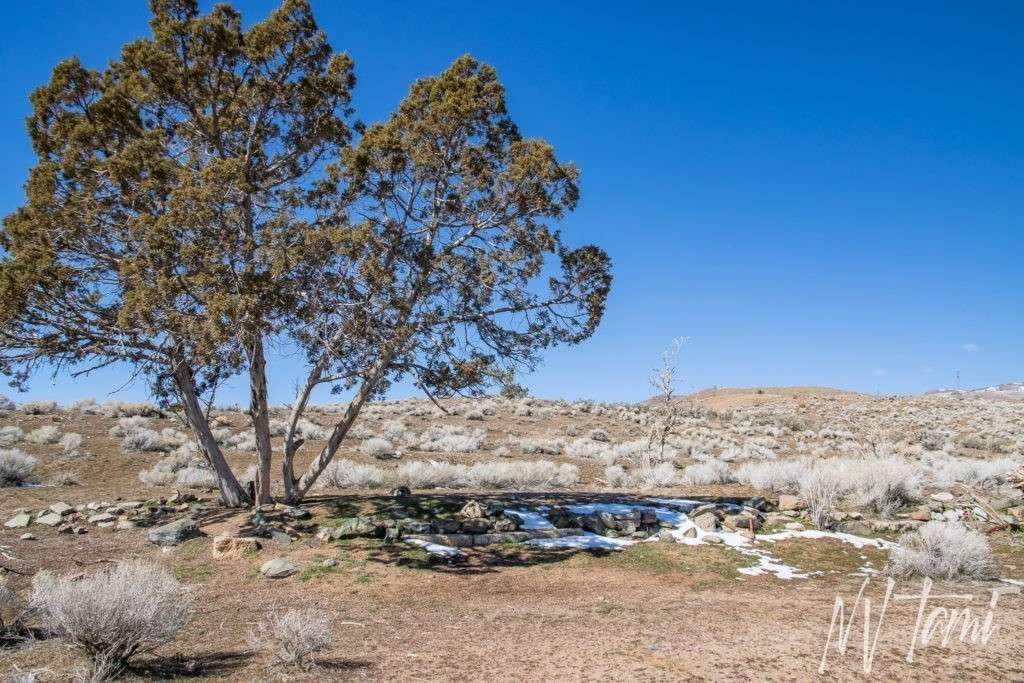
Rock foundations are the only remaining evidence of Summit Station. They are flanked by the Virginia & Truckee Railroad and can be seen from one of the historic train rides.
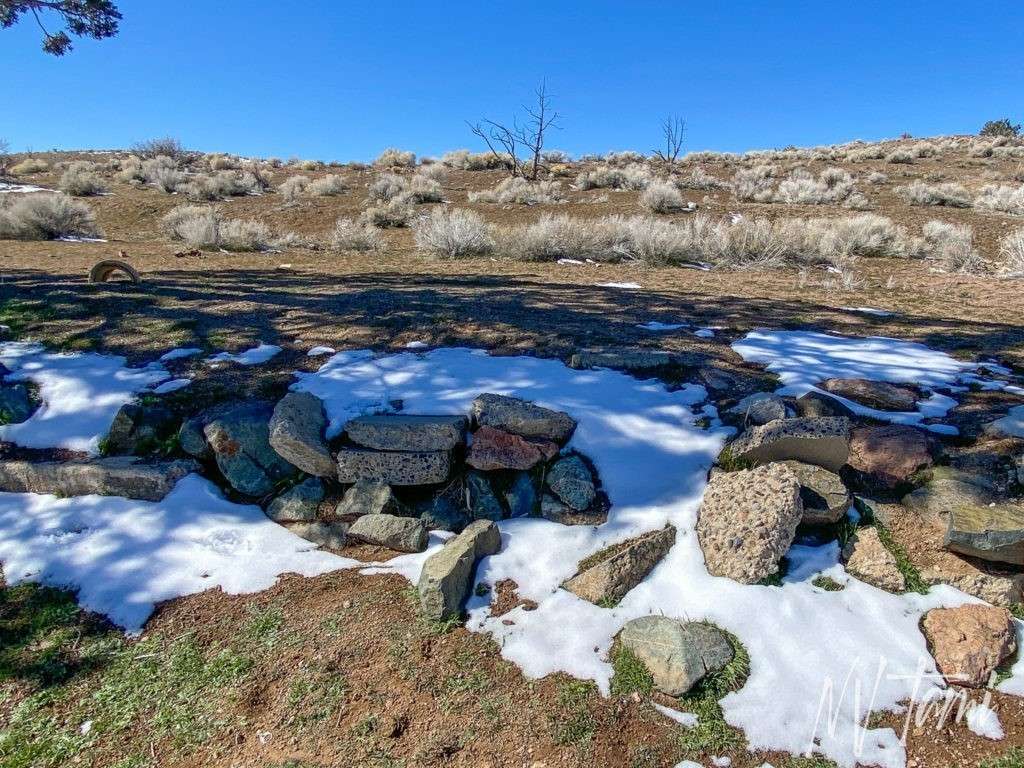
We had a great day exploring lesser-known areas around Dayton. There is so much history to find just off the highway, and I look forward to my next visit.
Want more ghost towns?
For information on more than three hundred ghost towns in Nevada, visit the Nevada Ghost Towns Map or a list of Nevada ghost towns.
References
- Carlson, Helen S. Nevada Place Names: A Geographical Dictionary. University of Nevada Press, 1974. Page 129.
- Carson Dialy Appeal, January 23, 1868: Estray Notice
- Gamett, James and Stan Paher. Nevada Post Offices: An Illustrated History. Nevada Publications, 1863.
- Gold Hill Daily News, November 10, 1863: Can’t Stand Fire
- Gold Hill Daily News, October 3, 1867: Fatal Accident
- Gold Hill Daily News, December 1, 1863: The Mayor and Marshall of Virginia City stopped by highwaymen
- Gold Hill Daily News, January 15, 1866: Ran Away
- Lingenfelter, Richard E and Karen RIx Gash. The Newspapers of Nevada: A History and Bibliogrpahy 1854-1979. University of Nevada Press, 1984.
- Nevada Appeal: All Roads Led to the Comstock, Almost
- Nevada Historical Society Quarterly: Rival Road Builders: Private Toll Roads in Nevada, 1852-1880
- Paher, Stanley. Nevada Ghost Towns and Mining Camps. Nevada Publications, 1970. Page 71.
- Paher, Stanley. Nevada Ghost Towns and Desert Atlas. Nevada Publications, 2009. Page 7.

Annalynne says
Great job 👏
Tami says
Thank you.